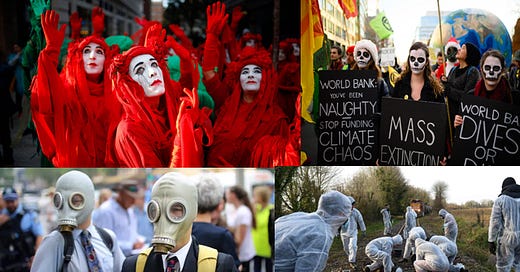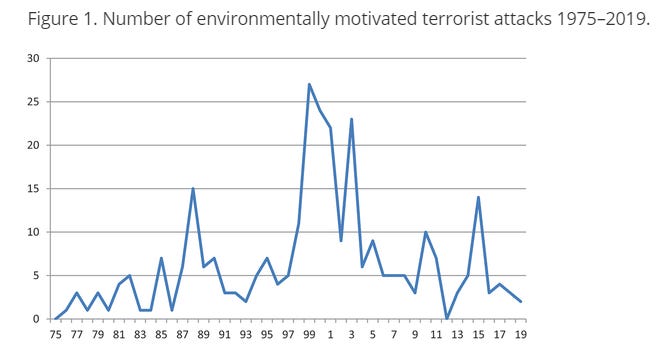In Germany this past week, protesters clashed with police over plans to create a new open pit coal mine in now-uninhabited village of Lützerath. The protests have thus far been mostly non-violent, although there have been accounts of injuries among both protestors and police. A spokesperson for the organization leading the protests said, “Even if you destroy Lützerath, we will fight on: until you stop burning coal, extracting fracking gas and building autobahns.”
The German protests are just the latest in what seem to be an escalation of tensions between climate protesters and governments. For instance,
Throughout 2022, climate protesters funded by billionaires staged protests by simulating (and sometimes causing) defacement of paintings in major museums;
Last October in France, climate protesters vandalized an agricultural irrigation project prompting the French government to send armed police to protect the installation;
In November, between 25,000 and 40,000 minks were released from a farm in Ohio, many of which died;
At the start of this year the UK advocacy group Extinction Rebellion announced a move away from disruptive protests, but just yesterday was back at it;
In turn the UK government has proposed harsher penalties for non-violent but disruptive protests like these.
These are all just anecdotes and do not say anything about a trend in the frequency or intensity of such protests. An assessment of environmentally-motivated terrorist attacks published last summer by Cranfield University concluded that there was no evidence of an increase, but warned that situation might change:
Trends currently do not show a rise in traditional environmentally-motivated terrorist attacks connected to the climate change crisis. This may change, however, as the climate crisis worsens and may also be affected if plans to more heavily criminalise non-violent climate protest activity are realized.
One academic analysis finds that environmentally-related terrorism peaked several decades ago and generally declined through 2019, as you can see in the figure below.
But will that trend persist? What is “eco-terrorism” anyway? And are there reasons to think that 2023 might see a rise in ecoterrorism?
I think so.





